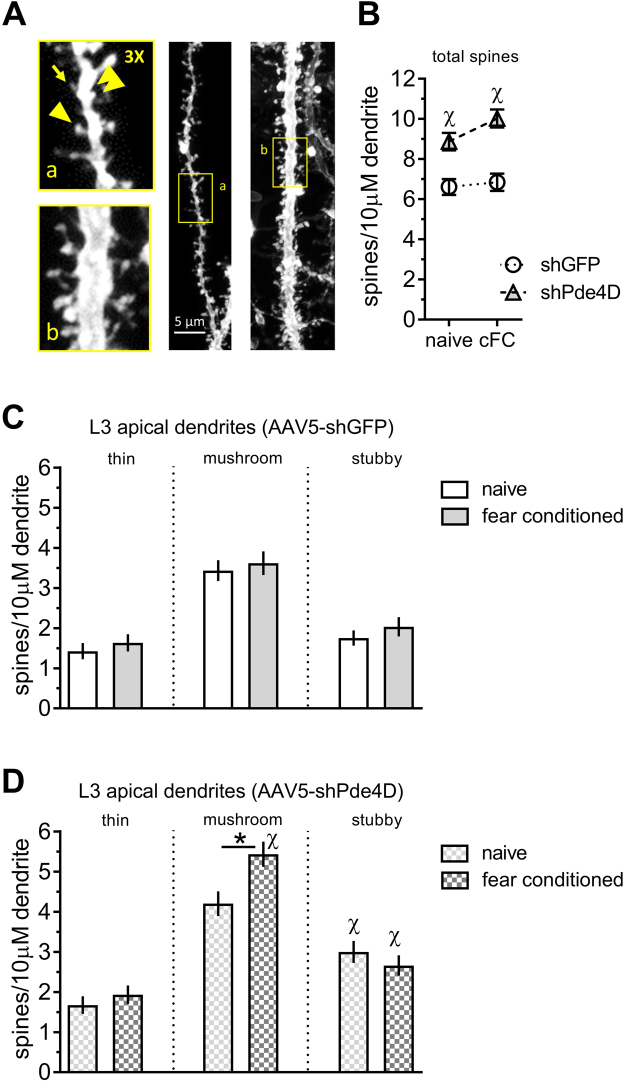Figure 7.
Effect of Pde4d KD and fear conditioning on spines in retrosplenial layer 2/3 neurons. (A) Representative laser scanning confocal micrographs of dendritic segments and dendritic spines in RSC L2/3 pyramidal neurons. Examples of thin-necked spines (yellow arrow), mushroom (arrowhead), and stubby (double arrowhead) spines in the 3× magnification insert represent the different spine classes. (B) Total spine number is increased by Pde4d KD independent of training. (C) Fear conditioning did not increase spine density in shGFP control virus injected mice. (D) Increased density of mushroom spines is observed after Pde4d KD and training. Stubby spines, in contrast, occur at a higher density in shPde4d virus injected mice irrespective of training when compared shGFP controls shown in panel C. n = 44–56 samples from 8 mice per group. Significant differences from untrained mice (naive) mice are indicated by an asterisk (*), and changes from shGFP control by the greek letter Chi (χ).

